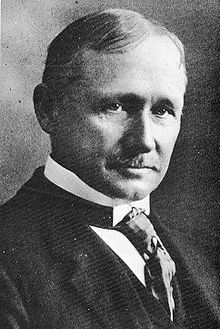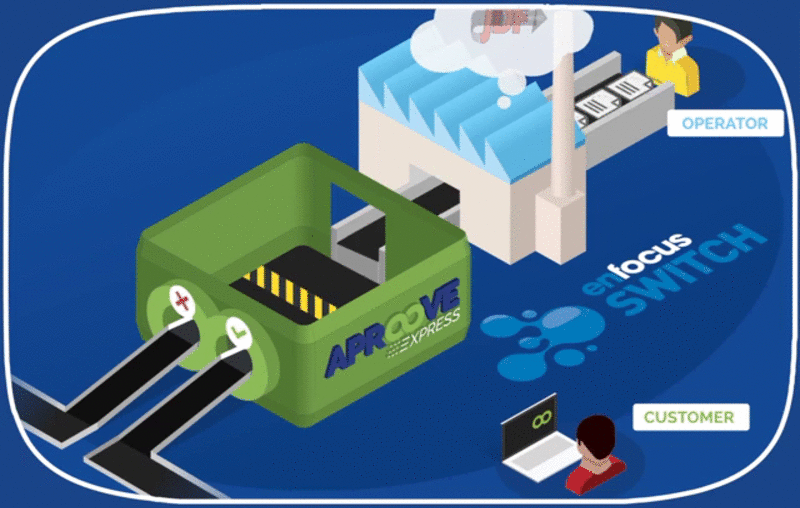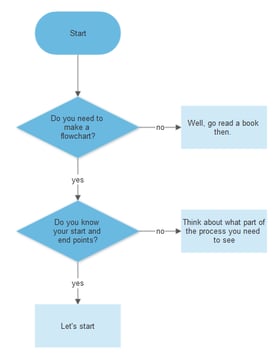Share this
What is a Workflow? Definition & Guide of Business Workflows
by Gary Fisher on September 27, 2021 8:29:46 AM EDT
When discussing business efficiency, the term “workflow” often gets mentioned. Yet, ask five different people for the definition, and chances are, you’ll get five different answers.
So, what is a workflow? How can you use workflow to improve your business’s efficiency and productivity? Is it worth your time?
In this guide, we will discuss all you need to know about business workflows, and by the end of this guide, you will learn about:
- What is a workflow?
- Different types of workflows in a business setting
- Workflow mapping to visualize workflows in a work
- Workflow analysis to identify inefficiencies and bottlenecks
- How to optimize the workflow to maximize its efficiency
Let us begin with the definition of workflow.
What Is a Workflow?
We can define a workflow as a set of tasks that occur in a particular sequence.
In a business setting, a workflow can either involve:
- A transformation of raw materials into finished products
- Processing of raw data into another format, or
- Providing a service to clients/customers
A workflow must have a specific objective that generates value for the organization/individual executing the workflow. In short, a workflow should be a value-generating activity.
 The idea and concept of workflow can be traced to the end of the 19th century. Frederick Taylor, the creator of Scientific Management, devised that organizations can improve labor productivity and organizational efficiency by analyzing and establishing workflow. Taylor invented a time and motion study, which is performed to measure the amount of time it takes to complete tasks to identify bottlenecks and inefficiencies.
The idea and concept of workflow can be traced to the end of the 19th century. Frederick Taylor, the creator of Scientific Management, devised that organizations can improve labor productivity and organizational efficiency by analyzing and establishing workflow. Taylor invented a time and motion study, which is performed to measure the amount of time it takes to complete tasks to identify bottlenecks and inefficiencies.
Henry Gantt also contributes to the workflow theory by developing the harmonogram method, which evolved into the widely popular Gantt chart. The Gantt chart was initially developed to visualize workflow and provide a timeline/schedule for the manufacturing process, so managers and business owners can track the progress of tasks against milestones in a manufacturing process.
These workflow ideas were originally developed in the context of manufacturing processes, especially in standardizing best practices and reducing waste. However, now workflow is implemented in many other industries to plan and monitor processes and projects systematically and logically, so we can identify bottlenecks and efficiencies and improve upon them.
Different Types of Business Workflows
In a business context, the term “workflow” is often used interchangeably with “process,” “business process,” or even “project.”
While all of these terms are indeed related, they are not the same.
To understand the differences between these terms, we have to learn how there are three different types of business workflows:
1. Process
Or, often called “business process,” is a repeatable workflow. The steps/tasks and the sequence of functions in a process are also predictable. Repeatable here means that when a process is given the same input, it will produce the same output consistently (at least with minimal variations)
Let use examples to illustrate the concept of a business process better:
- In a restaurant business, cooking the restaurant’s signature dish is a process. It’s repeatable, and the steps are predictable.
- In a typical office, submission and approval of reimbursement forms are a process.
- In a factory, product assembly is a widespread process
2. Project
Unlike processes, projects are non-repeatable, in the sense that even when given the same input, the output will likely be different. The steps and sequence of tasks in a project are also unpredictable because the sequences can vary every time the project is executed.
Again, here are some examples of business projects:
- In a restaurant, inventing a new dish is a project; the steps/tasks and the results may vary every time.
- In an office, onboarding a new client is a project.
- In a factory, the installation of new equipment is also a project.
3. Case
A business case is a type of workflow that is repeatable, but the steps required to execute the case aren’t predictable, and in fact, the following tasks that are executed might not even be known.
Only after we’ve gathered more input or information will the steps reveal themselves.
For example:
- In a restaurant, taking a customer’s order is a case. We wouldn’t know what the next steps are, and only after the customer has provided more information will we figure out the following tasks.
- In an office setting, handling client’s complaints is a case.
- In a factory, troubleshooting a machine is a case.
When discussing business workflows and especially workflow optimization, most of the time, we refer to processes. However, albeit with some differences, the same workflow management, and optimization principles can be applied to projects and cases.
Why Should We Care About Workflows?
 As we can see, workflows are all around us, and all businesses always involve at least one workflow in their day-to-day operations.
As we can see, workflows are all around us, and all businesses always involve at least one workflow in their day-to-day operations.
Some businesses might only involve one or two relatively straightforward workflows. On the other hand, some enterprises involve complex, interconnected workflows.
By identifying and structuring these workflows, we can understand three essential things:
-
The exact task(s) that are being performed
-
Who is responsible for each task
-
The time required to accomplish each task
By understanding these three elements of your workflow, we can measure how optimally the workflow is executed to improve upon it.
By identifying and understanding the workflow, we can optimize it to ensure it’s as efficient as possible.
Ultimately, by making sure all of our workflows are optimal, we can improve the organization’s overall efficiency and productivity in achieving its objectives: using fewer resources to achieve our goals at a shorter time frame. By doing so, we can also improve the organization’s revenue and profitability.
What Is Workflow Mapping?
Workflows, as discussed, are composed of sequential, step-by-step tasks, but these tasks and their sequence aren’t always obvious.
Hence comes the importance of visualizing and structuring the workflow into a visual format: a diagram, flowchart, Gantt chart, or other optical methods, a process we call workflow mapping.
By adequately mapping the workflow, we can get a deeper insight into how the workflow is and should be executed. We’ll get a bird’s-eye view of the whole workflow that ultimately allows us to perform workflow analysis (that we’ll discuss in the next section).
As we’ve mentioned, we can use various methods to map the workflow, but the most common way is to use a basic ANSI flowchart.
Below is a workflow diagram visualizing a content deletion process on Wikipedia:
As we can see, the flowchart method is about using various shapes and symbols to visualize the workflow. While there can be many different elements in a workflow, they can be differentiated into only three major components:
- Input: involving any asset that’s required to complete the task, including equipment, human resource, capital, and information
- Transformation/process: the transformation of the input so it becomes the output. The transformation or process can come in various forms: changes in characteristics, physical shapes, movements between locations, changes in formats (for data), etc.
- Output: the result of the transformation should generate more value when compared to the input
Each shape represents different workflow elements, and there are more than 25 shapes/symbols available. However, in terms of workflow diagram, there are four most important symbols:
Terminator: the oval shape represents the start and end points of a process
Operation: rectangle represents a specific task that is performed
Decision: diamond represents a point in the process where a decision must be made (i.e. Yes/No) before we can move on to the next step. 
Arrows: connecting different shapes in the process, representing the direction and flow of information
Besides the ANSI flowchart method, there are also other diagramming methods we can use in creating workflow diagrams, and here are some of the common ones:
- UML activity diagram: The UML (Unified Modeling Language) activity diagram can be considered a more “advanced” version of the basic flowchart. Especially useful in understanding the flow of a process and identifying conditions and constraints that cause particular actions or events.
- Swimlane chart: A very popular method besides the basic flowchart. Pretty similar to an ANSI flowchart, but the main difference is that the different shapes/symbols are separated with vertical lines (like the lanes in a competitive swimming pool). This method is used when other teams or departments are involved to emphasize the interactions between teams.
- SIPOC diagram: stands for Supplier-Input-Process-Output-Customer. This type of diagram is helpful to analyze the high-level processes involved in the workflow, especially the information movements between these different parties. SIPOC is useful when you want to focus on understanding the critical elements of the workflow rather than the exact sequence of tasks involved in the workflow.
- BPMN diagram: stands for Business Process Modeling Notation, this method is quite similar to the UML method, but as the name suggests, it focuses more on accuracy on business information rather than the details in technicalities (i.e., resources required for each task).
How To Map a Workflow Diagram With ANSI Flowchart
While the actual process may vary depending on the workflow itself, we can map a workflow diagram using an ANSI flowchart method with the following steps:
Step 1: Identify a workflow to map
If your business only has one workflow, then this should be a reasonably straightforward step.
If your business consists of multiple workflows, then the ideal approach is to map and optimize all of them, but you need to prioritize.
There are three main approaches you can use when picking between different workflows:
- Strategic: picking a workflow with the most significant potential impact on your organization, value-wise.
- Reactive: picking a workflow with apparent flaws and/or inefficiencies to fix the issues ASAP.
- Customer-centric: choosing a workflow that directly impacts customer satisfaction (i.e., shorter wait time)
When picking between different workflows, we should consider whether the workflow can be mapped with a flowchart or other methods will fare better (as discussed in the previous section). In general, processes with little variations that are self-contained can be easily visualized through a flowchart.
Step 2: Identify stakeholders of the workflow
Once you’ve identified which workflow you’d like to map, the next step is to gather those who have deep enough knowledge/experience with the workflow.
The most obvious are team members directly involved in the workflow, but there might be other internal and external stakeholders with enough knowledge of the workflow.
Step 3: Data gathering
Involve the stakeholders you’ve gathered and gain as much information as you can about the chosen workflow, such as:
- Where the process starts and ends
- All the tasks required to finish the workflow
- Who’s responsible for each task
- The sequence of tasks required
- Timelines of each task
- Resources/information needed to fulfill each task
And so on.
The more accurate and complete the information you’ve gathered, the more precise the workflow diagram will be.
Step 4: Outlining the workflow steps
Based on the information you’ve gathered above, you can start outlining or drafting the workflow map. You can start with a pen and paper, but we’d recommend using the built-in workflow diagram tool on your workflow management solution.
Ensure to accurately include information around inputs and outputs, stakeholders, and key metrics of each task.
Step 5: Polish the workflow diagram
Involve the stakeholders you’ve identified before to review the workflow diagram’s outline. Use this chance to gather validation and feedback on whether the workflow diagram is already accurate.
Remember that workflow mapping aims to map the workflow as-is, meaning accurately representing how the workflow is currently executed. We are not mapping the ideal, optimized workflow version, which will be our subject of discussion in the following sessions.
What Is Workflow Analysis?
![]() Workflow analysis is examining and analyzing the mapped workflow diagram to identify its issues (inefficiencies, bottlenecks, redundancies, process errors) and devise a plan on how we are going to improve and optimize the workflow. We’ll then use this workflow improvement plant to implement changes, ultimately to ensure the workflow is as efficient as possible.
Workflow analysis is examining and analyzing the mapped workflow diagram to identify its issues (inefficiencies, bottlenecks, redundancies, process errors) and devise a plan on how we are going to improve and optimize the workflow. We’ll then use this workflow improvement plant to implement changes, ultimately to ensure the workflow is as efficient as possible.
How to perform workflow analysis?
Assuming you’ve already got an accurate and representative workflow diagram as a result of the workflow mapping process, we can perform workflow analysis on this diagram by following these steps:
Step 1: Evaluating the qualitative aspect of the workflow
In this step, you should ask crucial qualitative questions about the workflow process, such as:
- Why does this workflow exist in the first place? What’s the purpose and objective(s) behind this workflow, and whether it’s genuinely needed.
- How often do you perform this workflow? If, for example, your organization only uses the workflow five times a year, it might not be worth analyzing and optimizing.
- What information is transferred in the workflow? How often? How often does data/information pass from one person to another within the workflow? If the answer is not too often, then this workflow might be redundant and no longer needed.
- Who is involved in the workflow? Whether the workflow involves stakeholders outside the company (vendors, clients, etc.). The more we can reduce these external interactions, the more we can reduce delays and inefficiencies in the workflow.
- How does the workflow comply with our business standards? Evaluate the workflow; does it does align with your company’s values and standards?. On the other hand, evaluate whether your standards and requirements are still required or simply slowing things down unnecessarily.
Step 2: Analyzing quantitative data
In this step, we should analyze the workflow diagram mapped in the previous step to identify bottlenecks and inefficiencies.
Suppose you are using a workflow management software solution like Aproove. In that case, you can also use the analytics feature in the software solution so you can measure quantitative metrics such as:
- How many times is the workflow initiated in a specific timeframe?
- The success rate of the initiated workflows
- The average time taken to complete each task? The shortest time? The longest time?
- How many workflows are initiated that end with some errors? What are these errors?
- Which employees/staff is taking the least time or most time to complete each task
- Identified bottlenecks
- How often are processes considered a failure or rejected by the approver?
By evaluating these quantitative metrics, we can identify issues and inefficiencies in the workflow. List all known issues in a recorded document to use this data to develop an improvement plan to optimize the workflow.
Step 3: Get qualitative feedback from stakeholders
Another critical aspect of evaluating the workflow is to get feedback from stakeholders and users of the workflow.
Ask them also to evaluate the workflow diagram and leave the feedback from their experience.
For example, in an approval workflow, you might discover that the Creative Director takes longer to respond and approve deliverables because he doesn’t like viewing deliverables on his mobile phone. You might not be able to identify this issue without interviewing real stakeholders.
Identify these qualitative issues, and as before, list them on a recorded document.
Compile all these quantitative and qualitative issues to create a comprehensive improvement plan
Using Analysis Results To Optimize Workflows
Based on the results of the workflow analysis, you’ve compiled an improvement plan that we’ll use to optimize the workflow.
We’ll implement these planned changes to the workflow and modify the workflow diagram based on these changes. Again, we can make these changes in real-time on the same application by using a workflow solutions.
Once these changes have been implemented, we should evaluate whether these optimizations do generate positive effects. Involve stakeholders and users of the workflow to assess whether or not the modified workflow is more efficient, or you should go back to the analysis process and adjust your approach.
Workflow Automation
Once the workflow has been properly optimized, we can implement workflow automation to the workflow to further improve its efficiency.
The idea behind automation is relatively apparent: we can free up our valuable employees’ time from administrative tasks to focus their efforts on work that matters. Also, automation can help reduce the risks of human errors.
However, when implementing automation, we have to consider two things:
- Whether it’s economically feasible. Depending on the workflow or even the specific task that will be automated, the cost of implementing automation may vary. We can, for example, automate customer service by installing a chatbot worth $1,000, but automating a product assembly process in a factory can cost a lot more. It’s crucial first to evaluate whether the workflow or specific task is worth automating.
- Whether it’s already as efficient as possible. It’s crucial to understand that workflow automation should only be implemented on workflows that are already efficient. When an inefficient workflow is automated, then automation would only amplify the inefficiencies.
Benefits of Workflow Management
By mapping, analyzing, optimizing, and automating a workflow— a process we call workflow management—, we can get the following benefits across the organization:
- More efficient workflows by eliminating bottlenecks
- Reduced costs of executing the workflow. We’ll get the same results while using fewer resources
- Improved decision-making since managers and executives can gain access to a clearer view of the whole workflow with the workflow diagram. Decisions can be more data-driven, rational, and consistent
- Higher quality and more consistent user/customer experiences
- A better understanding of each task in the workflows so we can optimize each of them
- Enabling organizations to remove or automate repetitive tasks from workflows, allowing employees to use their valuable time on tasks that more require their core competencies
- Better integrations between different workflows, between systems and workflows, and other technologies
Wrapping Up
By understanding the workflow concept, organizations can learn how to identify workflows occurring in their day-to-day operations and visualize them in a more structured workflow diagram.
A workflow diagram will provide us with an accurate representation of a workflow, be it a process, project, or case, and allow us to perform workflow analysis on the diagram to identify bottlenecks and inefficiencies. This enables us to optimize the workflow to ensure it is as efficient as possible.
Optimizing (and automating) workflows are critical in modern organizations. Organizations that are serious about workflow optimization should invest in a centralized workflow management system that they can use to map, analyze, and optimize workflows in just a single dashboard.
Share this
- Project Management (40)
- Online Proofing (28)
- Featured (27)
- Educational (25)
- New Release (25)
- Work Management (25)
- Business Workflow (23)
- Marketing management (22)
- Workflow Management (22)
- BPM Software (20)
- Marketing Workflow (20)
- Business Automation (19)
- Newsletter (19)
- Workflow Automation (17)
- Marketing Automation (14)
- enterprise project management (10)
- business process workflow (8)
- BPM (7)
- Task Management (7)
- Aproove news (6)
- Digital Asset Management (6)
- News (6)
- insurance work management (5)
- team (5)
- Industry News (4)
- business process automation (4)
- insurance marketing (4)
- marketing process (4)
- Compliance (3)
- Retail Marketing (3)
- brands (3)
- enterprise workflow management (3)
- printing workflow (3)
- AI (2)
- Document Management Automation (2)
- IT Project Management (2)
- Marketing Agency (2)
- Product Development (2)
- creative workflow (2)
- print (2)
- workflow optimization (2)
- Case Studies (1)
- Case Study (1)
- DAM Software (1)
- Document Workflow Automation (1)
- HIPPA (1)
- Healthcare (1)
- ISO (1)
- Insider (1)
- Resource Management (1)
- SOC2 (1)
- SaaS (1)
- banking (1)
- marketing teams (1)
- security (1)
- workflow diagram (1)
- workflow process mapping (1)
- workflow software (1)
- April 2025 (6)
- March 2025 (11)
- February 2025 (10)
- January 2025 (10)
- December 2024 (9)
- November 2024 (10)
- October 2024 (5)
- September 2024 (8)
- August 2024 (10)
- July 2024 (9)
- June 2024 (11)
- May 2024 (6)
- April 2024 (7)
- March 2024 (7)
- February 2024 (6)
- January 2024 (4)
- December 2023 (3)
- November 2023 (7)
- October 2023 (7)
- September 2023 (3)
- August 2023 (5)
- July 2023 (3)
- June 2023 (1)
- May 2023 (1)
- April 2023 (1)
- February 2023 (2)
- September 2022 (3)
- August 2022 (1)
- July 2022 (1)
- May 2022 (1)
- March 2022 (3)
- February 2022 (3)
- January 2022 (3)
- November 2021 (2)
- October 2021 (2)
- September 2021 (1)
- August 2021 (4)
- July 2021 (4)
- June 2021 (2)
- May 2021 (3)
- April 2021 (1)
- February 2021 (1)
- November 2020 (1)
- October 2020 (2)
- July 2020 (4)
- June 2020 (2)
- May 2020 (2)
-jpeg.jpeg)
No Comments Yet
Let us know what you think